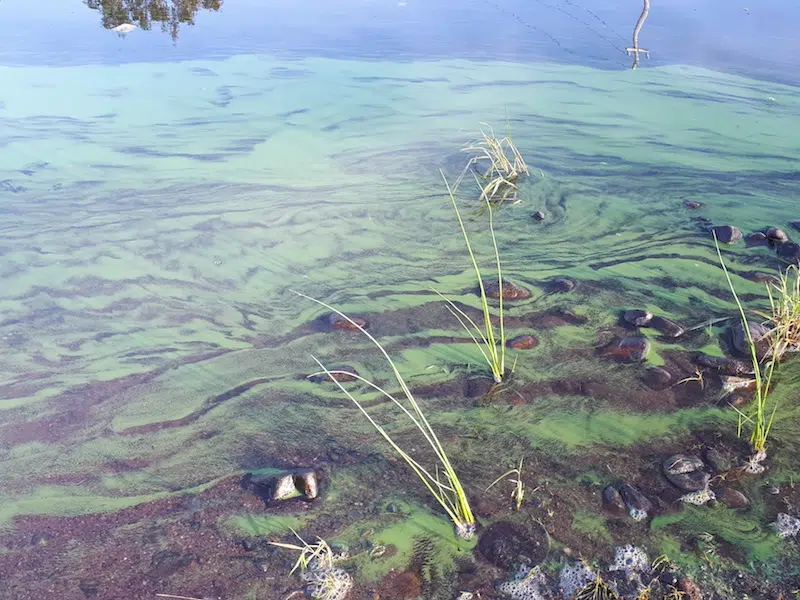
A medium-density bloom of blue-green algae species in Nova Scotia, near the shoreline of a lake. Photo: Department of Environment and Climate Change
Nova Scotia’s Department of the Environment and Climate Change has updated its list of bodies of water experiencing blue-green algae blooms and there are now three lakes on that list in Lunenburg County.
The newest additions in the county include Big Mushamush Lake and Hunts Lake- joining Covey Lake which was added in June.
It’s advised that people and pets refrain from using bodies of water experiencing blue-green algae blooms as it can cause harmful symptoms in humans, and for pets it can be fatal if ingested.
In people, blue-green algae exposure when swimming can cause itchy, irritated eyes and skin. Swallowing or inhaling the water can cause headaches, fever, diarrhea, abdominal pain, nausea and vomiting. Prolonged exposure can damage the liver.
Children are at greater risk because of their lower body weight. They also tend spend more time in water and are more likely to swallow it.
Despite the name, blue-green algae can be turquoise, green, brown, red, white or mixes of these colours. Blue-green algae blooms can look like fine grass clippings in the water, spilled paint or pea soup. Sometimes they look like a thick scum on the surface. They often smell musty or grassy when healthy and like ammonia when decomposing.
There may also be algae mats at the bottom of clear shallow areas of lakes and rivers or on the shoreline. The algae mats look like clumps of vegetation and can appear black, brown or dark green in the water.
It is likely more blue-green algae blooms will be reported over the summer as Nova Scotia has been experiencing weather conducive to them.








